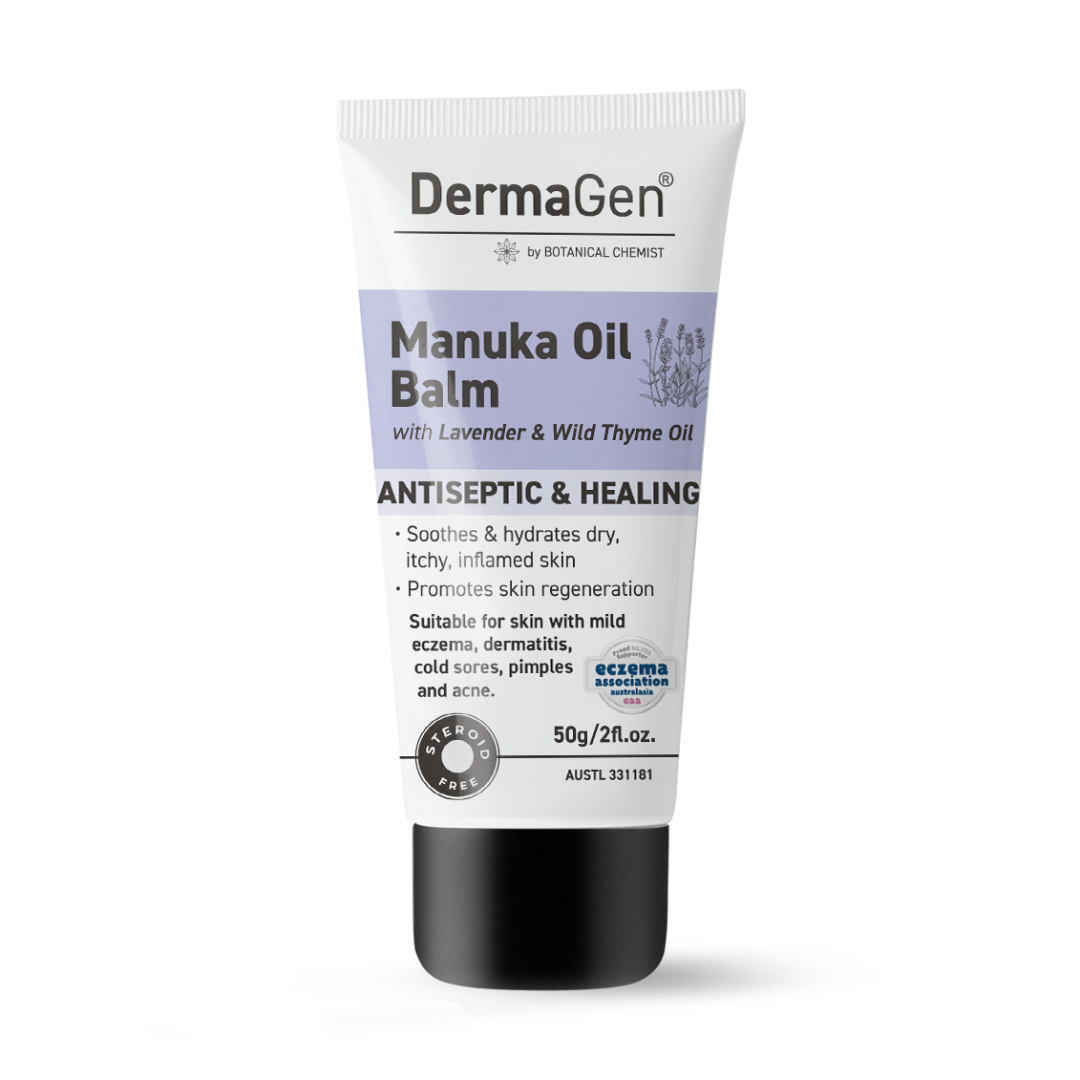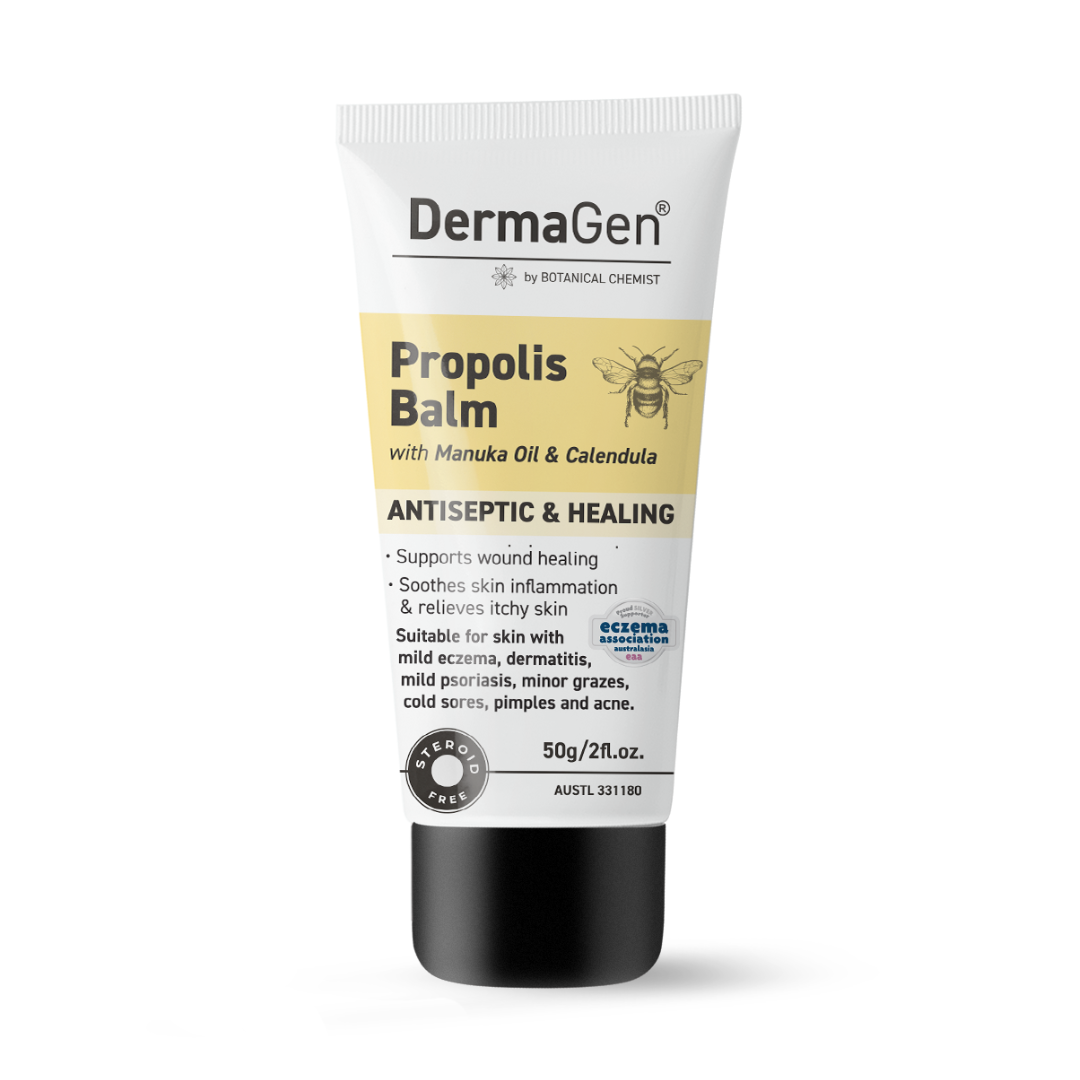Are you suffering from Topical Steroid Withdrawal (TSW) and don't realise it?
Topical steroid creams are often used to treat eczema and other skin conditions, as they can relieve common symptoms like itching and scaling.
TSW is a rare reaction to stopping the use of topical steroid creams.
It can result in a rash that is more severe and painful than the eczema it was originally used to treat. It appears as a wide-spread area of red skin, that may feel like it's burning or an intense itch all over the body, even in places where the rash was not present before, with the skin cycling between flare-ups, changing from itchy, to dry and peeling, to wet and oozing in some cases.
ITSAN President, Kelly Barta and past President, Kathryn Tullos, are co-authors of a paper, which highlights the TSW pilot study 16 of their amazing community members courageously participated in to help get this information out into the world!
Sometimes what you may be using to treat the symptoms, is actually the cause of the worsening symptoms.
Would like to watch more educational videos on TSW Syndrome?
Expert Physicians Address Your Burning Questions on TSW Syndrome: From Identification and Diagnosis to Effective Treatment and Prevention Strategies
Topical Steroid Withdrawal symptoms can last a long time, depending on the amount of topical steroid used, the potency, and the area it was applied. In time, the flare ups will be less intense and less frequent.
By nourishing the skin barrier, as opposed to thinning it, the skin will be more resilient and not break so easily when it is scratched.
This also helps to minimise other skin infections such as bacteria, fungal and viruses that can colonise when the skin barrier is compromised.
Our products can help soothe the itch, reduce the redness, and help open, broken skin heal quicker by supporting the wound healing process.


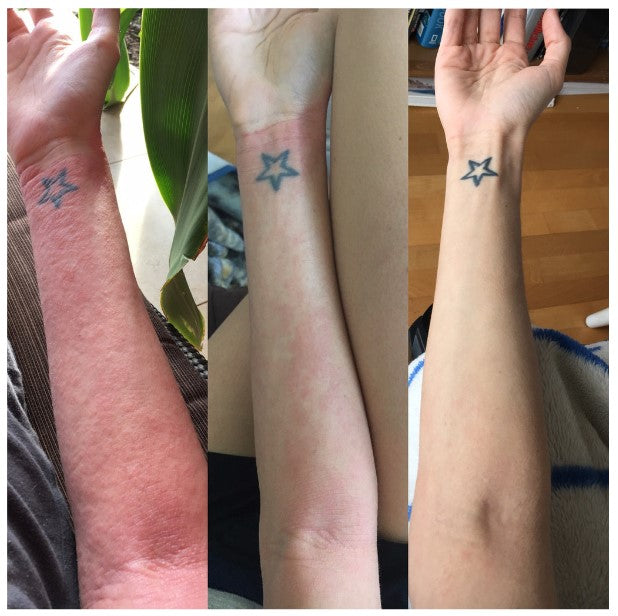
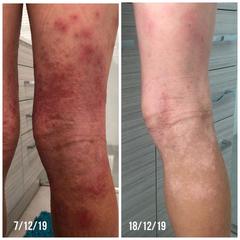
The higher the potency, the longer the period of application
Prevention of this happening can only come by patients and doctors being alert to the risk and avoiding prolonged frequent and prolonged use of moderate to high potency topical corticosteroids.
The higher the potency, the longer the period of application (ie more than one year), and the more frequent the application (more than once daily), on areas that have higher absorption rates (ie the face), the more likely that topical corticosteroid withdrawal may occur.

Your Skin Doesn't Have to be a Battleground
We met Dr Kayla Clarke a few years ago now. In 2016, after a lifetime of eczema and allergies, her body went into a full body inflammatory process called Topical Steroid Withdrawal (TSW). For an entire year she was covered head to toe in a red, inflamed, oozy, flaky rash.
With her knowledge and experience she has developed a course tailored to helping anyone going through TWS.

Topical steroids aren’t always an answer
TSW also known as red burning skin and steroid dermatitis, is becoming more and more common. We are seeing this more in long-term users of topical steroids after they stop the use, or when the skin develops tolerance and a stronger topical steroid is required to suppress the symptoms. We sometimes also see these symptoms in younger babies or children after use of a mild topical steroid, or potent topical steroid once tolerance sets in, as their skin is much thinner, and the absorption of the topical steroid is greater.
Symptoms include redness of the skin, a burning sensation, and itchiness. This may then be followed by skin peeling ( www.ITSAN.org has more information on the symptoms).
For more severe TSW symptoms
please consult your doctor who can also support you on your journey through this.
You can bring these recommendations to their attention.
If you are wanting to find a List of TSWS Supportive Doctor and Practitioners, we have a list for you here
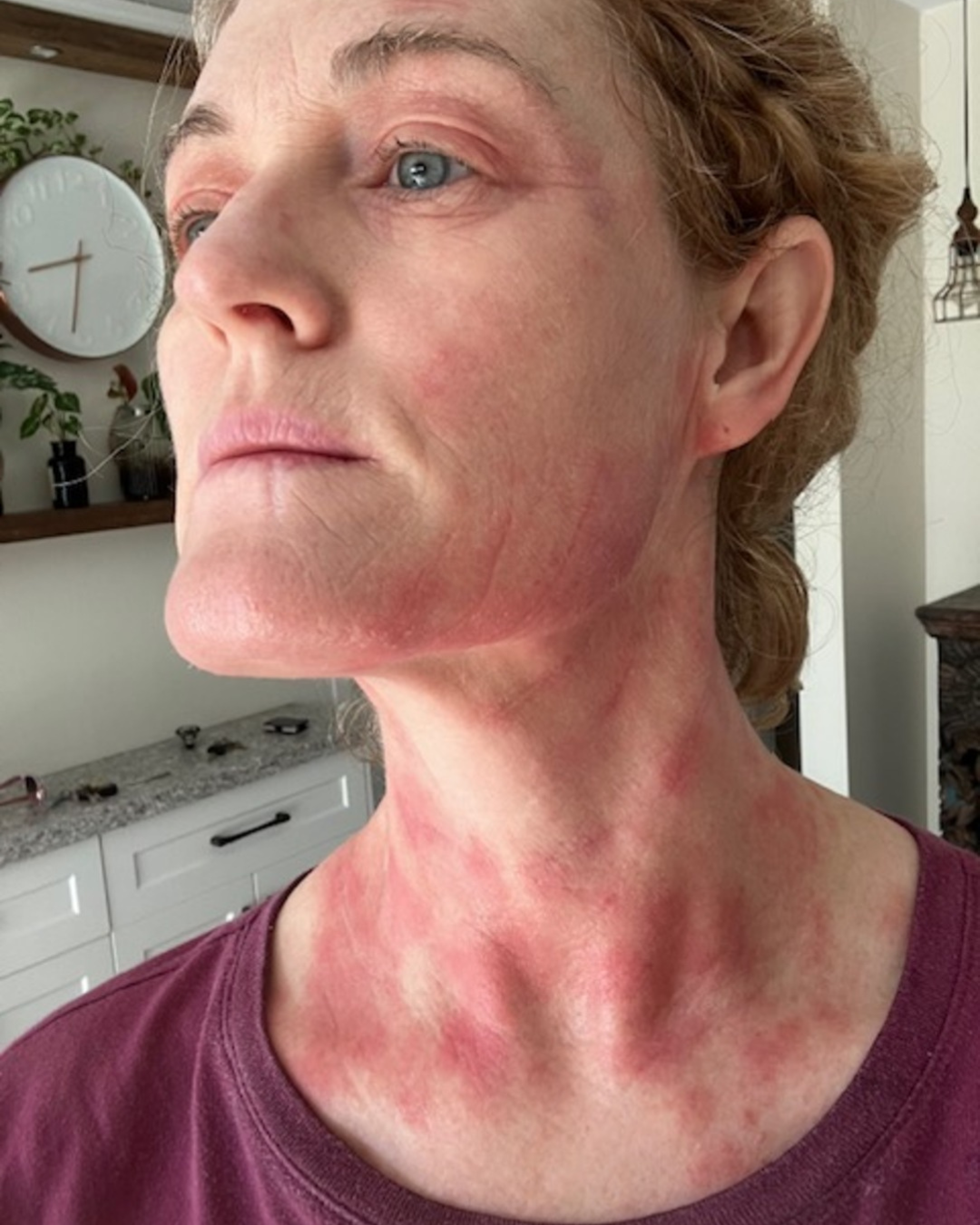
The Power of Real Stories
Every individual's journey with their skin is unique. Whether it's battling a specific condition, navigating the complexities of ageing, or simply seeking healthier skin, each story holds valuable insights.
When Amy first approached us a couple of years ago, her distress was palpable. She had been on a tumultuous journey, trying to find solace from her persistent skin issues.
Traditional treatments, which often work for many, seemed to have little effect on her. Each attempt, each product, and each promise that failed only added to her mounting frustration and despair. It wasn't just about the physical discomfort; the emotional toll was evident in her correspondence.
My son who is 8, has had eczema his entire life.
"We stopped topical steroids 3 years ago and he has had regular flares, but this one is one of the worst.
His skin was weeping raw, glands were very swollen, and he had to have time off school as it was so painful for him. His skin was broken, inflamed and sore around his elbows, all down his legs, his back, his neck, and wouldn't go anywhere near water as it was horrifically painful.
He is already taking a multivitamin, magnesium/zinc/calcium supplement, probiotic and an immune support, plus aloe vera for juice.
After using the Manuka Balm for and Manuka Oil Cream, we saw the skin around his elbows heal after 5 days, no more weeping, and the flare up much improved.
He loves the Manuka Oil Balm the most, both cream and balm does not sting like the others he has tried in the past!
We kept applying Zinc on the larger areas that were weeping such as the back and torso, together with the Manuka Oil Balm.
11 days later and his skin has improved so much, this is the fastest healing he has had with a bad flare.
Jasper is so happy and chuffed. He treasures his little pot and it goes everywhere with him. It's never very cheap to get good natural products and we have spent so much money over the years trying different things for him.
6 months down the line and he is still doing so well. The small flare he had seemed to be staying mild. He is using the Manuka Oil Balm at night time which is keeping it at bay!"
Some people experience problems when they stop TCS treatment after using them for some time.
These effects are sometimes referred to as Red Skin Syndrome, Topical Steroid Addiction or alternatively Topical Steroid Withdrawal (TSW) syndrome.
These terms can mean different things to different people, and are associated with a variety of medical conditions that need different treatment approaches:
1. Rebound erythema (redness). TCS are medicines known as ‘vasoconstrictors’: they close down tiny skin blood vessels, so the skin looks paler. When TCS treatment is stopped, rebound dilatation (enlargement) of the blood vessels occurs in the skin, and can cause redness and swelling. This usually settles down on its own with time.
2. Facial redness. Rosacea, acne, and perioral dermatitis caused by excessive use of TCS can worsen when TCS treatment is stopped. This is because steroids suppress inflammation.
3. Rapidly worsening redness, soreness, itch, scaling, and swollen glands. These may represent relapse or worsening of the underlying eczema after the anti-inflammatory steroid has been withdrawn.
An alternative anti-inflammatory treatment or medicine that suppresses the immune system may be required.
Hypoadrenalism
This is serious and very rare. If a high-strength TCS is applied to large areas of skin over a prolonged period, some will be absorbed into the bloodstream, as is the case when a steroid medicine is taken in tablet form by mouth (see links below for reference) also NES information).
This can suppress the natural production of steroid hormones by the body’s adrenal glands. If this happens, people can become ill when they stop taking TCS due to a lack of adrenal hormones (hypoadrenalism).
TO AVOID THIS
TCS treatment should be reduced gradually to give the adrenal glands time to recover, and an alternative eczema treatment should be used if necessary.
If tests confirm hypoadrenalism, it may be necessary to take hydrocortisone (a steroid tablet) by mouth until the adrenal glands recover.
We are committed to working with a number of charities and foundations
The reason why we started this venture has us continuously working behind the scenes with a number of charities and foundations to help contribute to the ongoing research for TSW, Eczema and Dermatitis.
Dermagen gives a portion of its profits back to education and support to those suffering from the symptoms of eczema and dermatitis.
We are proud to work with the charity Eczema Association of Australasia (EAA), which supports and educates eczema sufferers and carers.
We provide a monthly donation to ITSAN, which is a not-for-profit that advocates, offers support to those going through Topical Steroid Withdrawal (TSW) symptoms, raises awareness and provides education on TSW to patients and health professionals.
A part of our profits also goes to the RAAISE platform which supports businesses that come up with solutions to solve climate change. For example:
AirBridge 🇦🇺 :: Carbon Capture Storage and Utilisation Tech that captures CO2 and locks it in solution for use in new carbon-fed supply chains
Library of Things 🇬🇧 :: borrowing economy **** Making borrowing better than buying with a ‘plug and play’ community item rental service
For the Better Good 🇳🇿 :: plastic alternative A plant-based plastics, circular packaging solution
We are committed to your skin health, offering support to those who are suffering from eczema and TSW, making a difference to climate change and reducing the burden of Chronic Wounds and Antimicrobial Resistance. ♥️
Exemple de titre de produit
- Prix normal
-
$19.99 - Prix normal
-
- Prix de vente
-
$19.99


